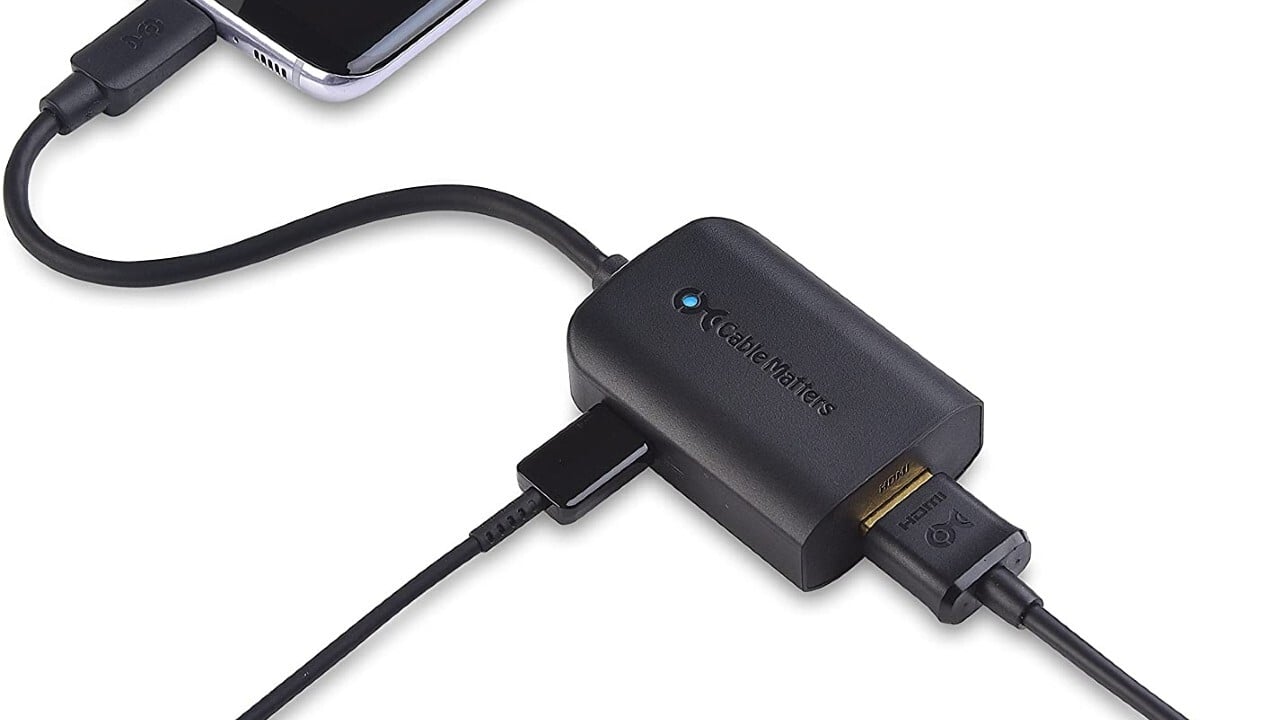
Required Items
Before you start, gather the following items:
- Android Tablet: Ensure your tablet has an HDMI port or a USB-C port for an HDMI adapter.
- TV: The TV should have available HDMI ports.
- HDMI Cable: A standard HDMI cable that fits your tablet's HDMI port. If your tablet has a mini or micro HDMI port, an adapter may be needed.
- HDMI Adapter (Optional): If your tablet lacks an HDMI port, a USB-C to HDMI adapter or a micro USB to HDMI adapter will be necessary.
Step-by-Step Guide to Connecting via HDMI
Identify the HDMI Port on Your Tablet
Check the back or side of your tablet for the HDMI port. Most tablets have either a standard mini HDMI port or a USB-C port that can be connected to an HDMI adapter.
Prepare the HDMI Cable
- If your tablet has a standard mini HDMI port, use a standard HDMI cable directly.
- For a micro HDMI port or a USB-C port, an adapter is required. For example, newer iPads use Apple’s Lightning Digital AV Adapter, while Samsung tablets need a different adapter.
Connect the HDMI Cable to the Tablet
- For a standard mini HDMI port, plug the HDMI cable into the port on your tablet.
- If using an adapter, plug the USB-C end of the adapter into your tablet, then connect the HDMI end of the adapter to the HDMI cable.
Connect the HDMI Cable to the TV
Locate an available HDMI port on your TV and plug in the other end of the HDMI cable. Ensure the cable is securely seated in both the tablet and TV ports.
Select the Correct HDMI Input on Your TV
Use your TV remote to navigate to the input settings and select the correct HDMI port corresponding to where the cable was plugged in.
Verify Connection
Once the correct HDMI input is selected, your tablet’s screen should appear on your TV. If nothing appears, check that the cable is properly connected and the TV is set to the correct input.
Additional Methods for Wireless Connectivity
While HDMI cables provide a seamless and lag-free connection, wireless methods can be convenient if you prefer not to deal with cables. Here are some popular wireless methods:
Android Screen Mirroring
Android devices often come with built-in screen mirroring capabilities. This feature allows you to mirror your tablet’s screen directly onto your TV without needing any additional hardware.
Method 1: Using Built-in Screen Mirroring
- Swipe down from the top of your tablet’s screen to access the notifications panel.
- Look for the screen mirroring option, which might be labeled as "Smart View" on Samsung devices.
- Select your TV from the list of available devices. If your TV isn’t listed, ensure both devices are connected to the same Wi-Fi network.
Method 2: Using Google Home App
- Download the Google Home app on your tablet.
- Tap on the account button at the bottom right corner of the screen.
- Scroll down to mirror device and select your TV or monitor from the list.
Chromecast
Chromecast is a popular wireless streaming device that allows you to cast specific content from your tablet directly onto your TV.
Setting Up Chromecast
- Ensure both your tablet and Chromecast are connected to the same Wi-Fi network.
- Open an app like YouTube or Netflix on your tablet.
- Look for the cast icon (usually represented by a small TV) and select Chromecast from the list of available devices.
Miracast
Miracast is another wireless standard that allows you to mirror your tablet’s screen onto a compatible TV.
Using Miracast
- Ensure both devices are connected to the same Wi-Fi network.
- On your tablet, go to settings > connections > screen sharing or screen mirroring.
- Select your TV from the list of available devices.
Troubleshooting Tips
If you encounter issues while trying to connect your tablet via HDMI or wireless methods, here are some troubleshooting tips:
HDMI Connection Issues
- Check Cable Quality: Ensure you are using a high-quality HDMI cable that supports the resolution of your tablet.
- Adapter Compatibility: If using an adapter, make sure it is compatible with both your tablet and TV.
- HDMI Port Compatibility: Ensure the HDMI port on your tablet is compatible with the cable or adapter you are using.
- TV Input Settings: Verify you have selected the correct HDMI input on your TV.
Wireless Connection Issues
- Wi-Fi Network: Ensure both devices are connected to the same Wi-Fi network.
- App Compatibility: Check if the app you are using supports wireless casting or screen mirroring.
- Device Compatibility: Verify both devices are compatible with the wireless standard being used (e.g., Miracast, Chromecast).
Connecting your Android tablet to a TV using an HDMI cable is a straightforward process that can enhance your viewing experience. However, wireless methods like screen mirroring and Chromecast offer convenience and flexibility. By following the steps outlined in this guide and troubleshooting tips, you should be able to successfully connect your tablet to your TV whether using a cable or wirelessly.
